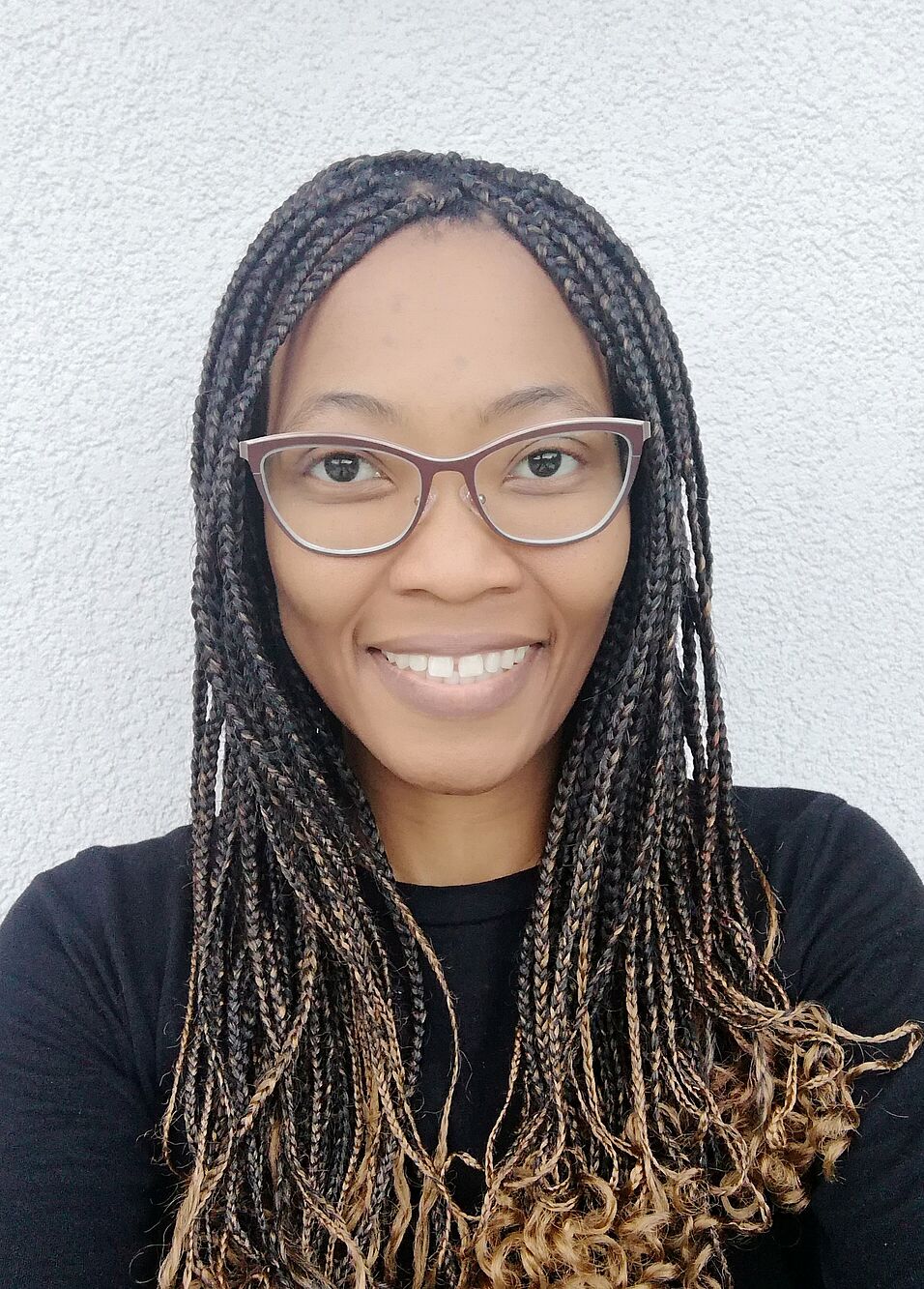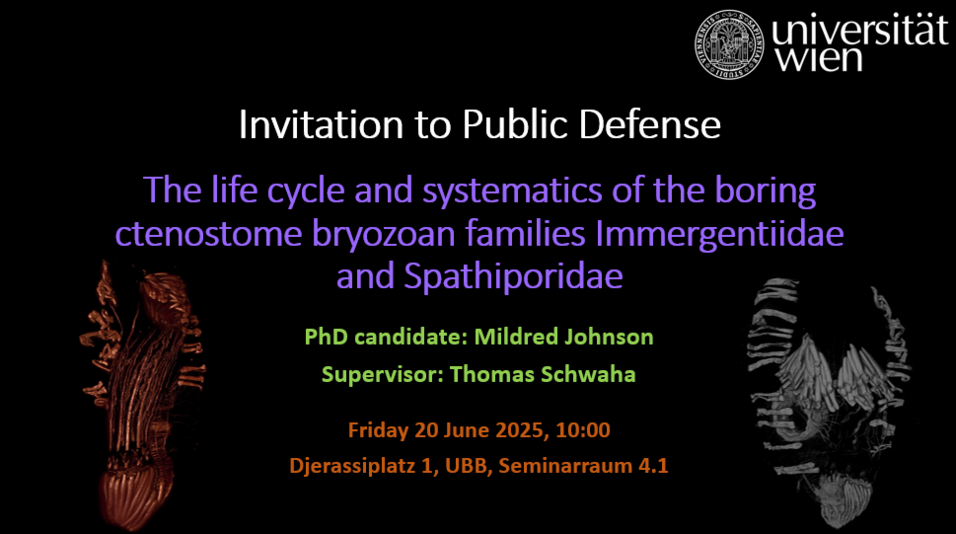Advisor: Thomas Schwaha
PhD Defensio
Friday, June 20th, 2025, 10:00 CET
SR 4.1, UBB
Djerassiplatz 1, 1030 Vienna
Abstract
Immergentidae and Spathiporidae are two extant families of endolithic ctenostome bryozoans, each consisting of one genus Immergentia and Spathipora, respectively. They dissolve calcium carbonate substrates by chemical means, creating distinct borehole traces and colony patterns, an external diagnostic characteristic extensively used in prior years to differentiate genera and species. New species have been assigned largely in the absence of soft-body morphology and partial histological sections exist only for I. californica and S. mazatlanica, with illustrations for few species. Systematic uncertainties arose, a consequence of this practice. The aims of this study were to do a comparative analysis of soft-body morphology with existing and new data, investigate early colony development, determine growth rates as well as distribution, and develop a comprehensive description of species to advance the taxonomy and phylogeny of immergentiids and spathiporids. This was achieved by employing techniques such as histology, immunocytochemical staining, resin casts, 3D reconstructions and DNA sequencing. We discovered two new immergentiids, I. stephanieae and I. pohowskii as well as a new boring bryozoan family Silenidae fam. nov., with three genetically distinct species. Two characters not previously reported for Immergentia, the cardiac constrictor and intercalary kenozooids, were described. I demonstrate that Spathipora and Silenia gen. nov. both possess true stolons, eight tentacles, a prominent gizzard in the gut and a funicular system, which are diagnostic for the superfamily Vesicularioidea. Phylogenetic analyses based on sequence data support an arachnidioidean affinity for Immergentia and vesicularidioidean affinity for Silenia gen. nov. and Spathipora. In addition, settlement and growth experiments provided first reports of growth rates and insights into early development of immergentiids. I demonstrated the importance of soft-body morphology for delimiting species, provide insights into the life cycle and resolve the phylogenetic relationships of ctenostomes and boring bryozoans.


